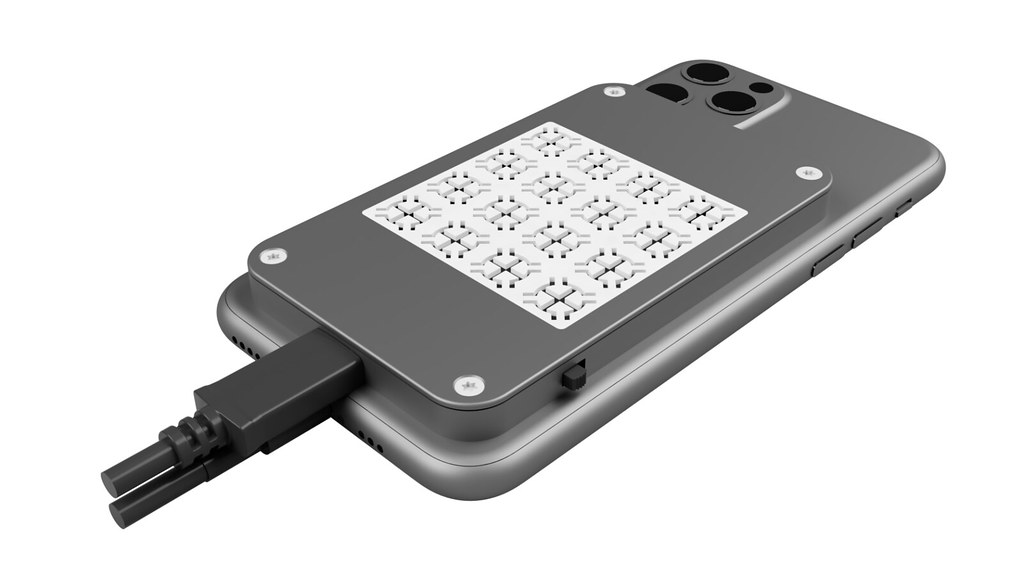A University of Bath engineering project that aims to help visually impaired people perceive objects, shapes and text by touching an interactive handheld pad has won a prize that will see the technology turned into a working prototype.
The project, which was awarded first prize in a competition run by semiconductor manufacturer X-FAB and prototyping specialist EUROPRACTICE, represents a potential breakthrough in how vibrotactile displays could work.
The ‘seeing pad’ display, a mobile phone-sized rubber pad, uses small vibrating actuators that can be raised and lowered to display a shape or pattern, such as Braille characters. Plans for similar displays have previously been discussed but have been limited by the large size of the actuators and electromagnetic coils that underpin them.
Dr Ali Mohammadi, alongside colleagues from Bath’s Department of Electronic and Electrical Engineering, have devised a method of increasing the effective size of the grid of ‘Taxels’ - or tactile pixels - on the pad from 16 to 32. This doubling of the ‘resolution’ of the pad has been achieved by using a new technique that can vibrate different parts using a single coil.
The team hopes that with development and testing this technique could see further doubling of the resolution of a display, such as those seen in TVs or computer monitors, which would eventually put tactile displays capable of expressing highly detailed information in the palm of the hand.
This technique behind the breakthrough, selective electromagnetic actuation, takes advantage of the different mechanical resonances of parts beneath the tactile display by vibrating a coil at different speeds to move individual elements.
This could present a low-cost and reliable way of using a high number of tactile elements over a small area - which has previously formed a barrier to making vibrotactile displays commercially viable.
Dr Mohammadi said: “We started this project with the aim of helping blind and visually impaired people by making a ‘better Braille’ that could help them better perceive information and their environment.
“There is huge potential for a display like this, particularly when linked with the imaging and processing capabilities of mobile phones. The device is being developed as part of a wider project aiming to improve the lives of the visually impaired community, and in collaboration with colleagues from the Departments of Computer Science, Psychology and Education at Bath and the University of Edinburgh.
“Eventually, our aim is to make it possible for a visually impaired person to take a photo of an object, or even an animal, and then perceive what it looks like through touch - so we are delighted about the support of X-FAB and EUROPACTICE, which will see a full prototype made that we can use for further research and development.”
Volker Herbig, Vice President of X-FAB’s Microelectromechanical Systems (MEMS) Business Unit, said: “Among the primary criteria for entries in this competition was that they should be of real value to our society, and the winning project clearly does this to a very high degree, as well as having a great deal of commercial viability too.”

